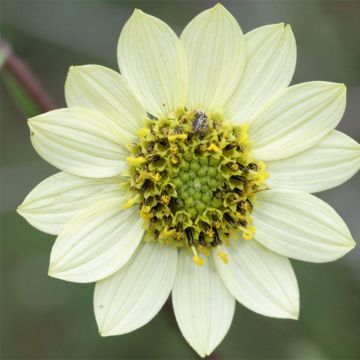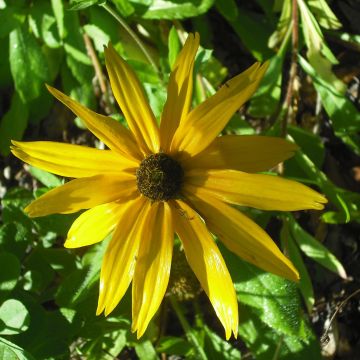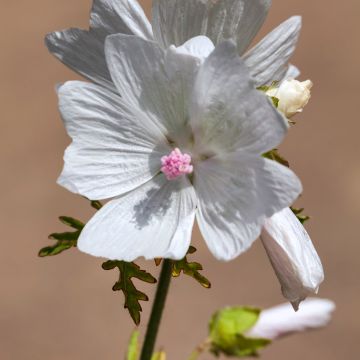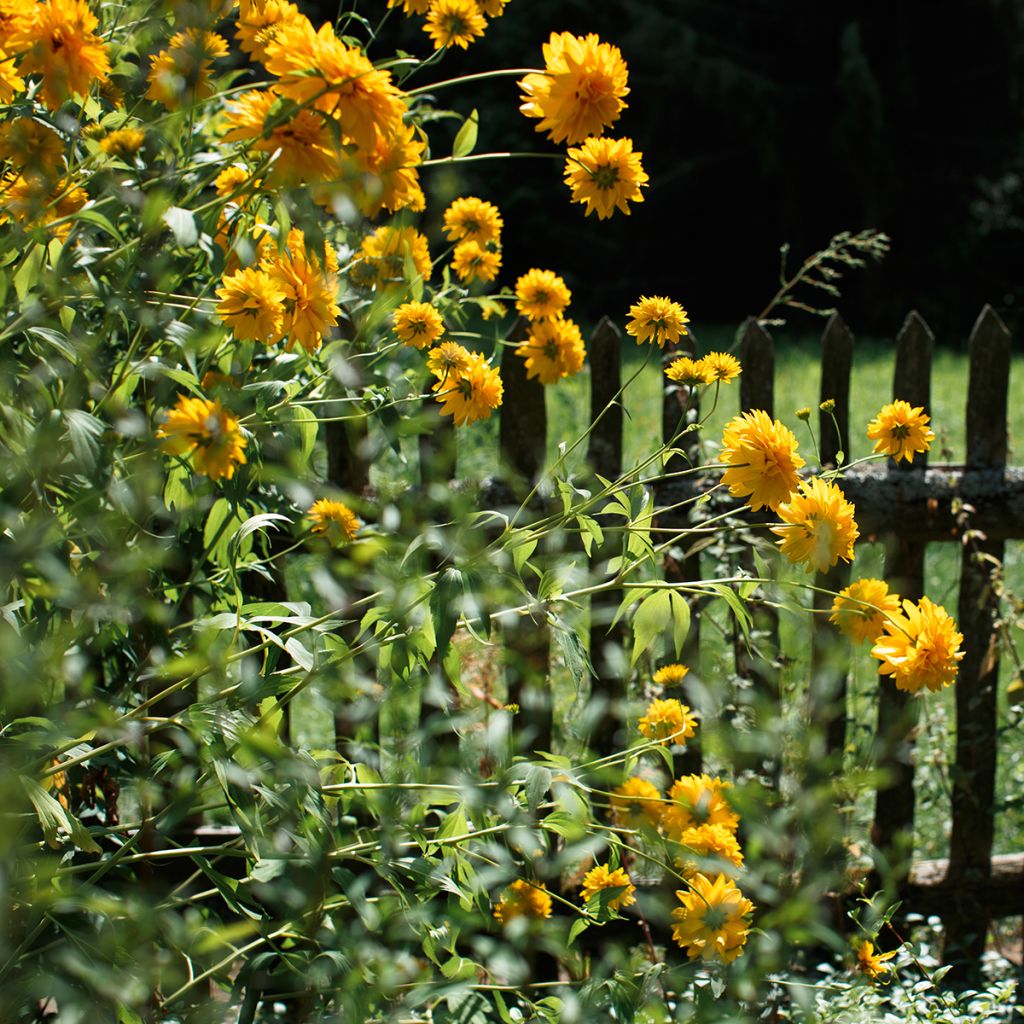

Helianthus multiflorus x decapetalus 'Sunshine Daydream'
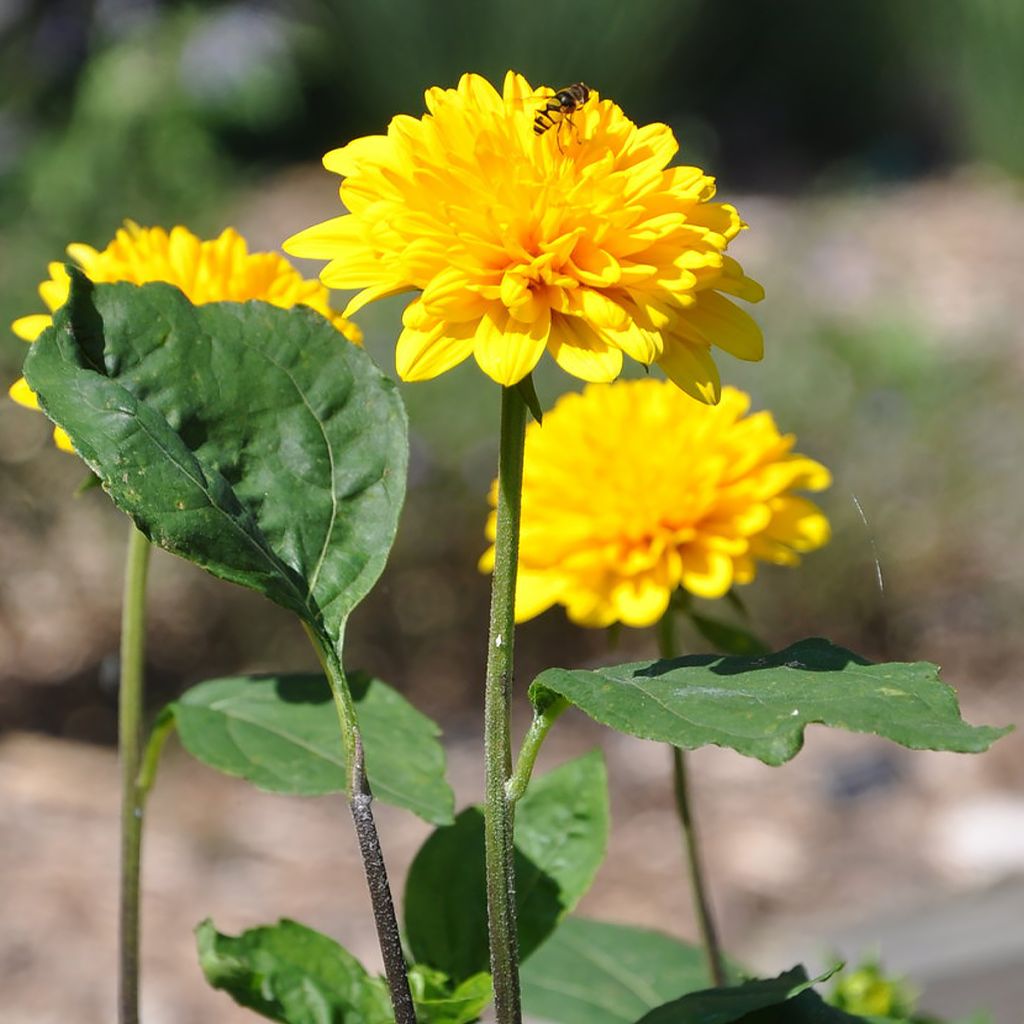

Helianthus multiflorus x decapetalus 'Sunshine Daydream'
Helianthus multiflorus x decapetalus 'Sunshine Daydream'
Helianthus multiflorus x decapetalus Sunshine Daydream
Thinleaf Sunflower, Ten-petal Sunflower
Hello, none of them survived after receiving them. I should have sent the order back, but oh well.
theo DECOEN, 17/04/2024
Why not try an alternative variety in stock?
View all →This plant carries a 12 months recovery warranty
More information
We guarantee the quality of our plants for a full growing cycle, and will replace at our expense any plant that fails to recover under normal climatic and planting conditions.
From €5.90 for pickup delivery and €6.90 for home delivery
Express home delivery from €8.90.
From €5.90 for pickup delivery and €6.90 for home delivery
Express home delivery from €8.90.
Does this plant fit my garden?
Set up your Plantfit profile →
Description
Helianthus multiflorus 'Sunshine Daydream' is an excellent perennial variety of sunflower, a tall plant adorned with numerous double flowers in a bright yellow colour similar to some dahlias. This flowering is abundant and continues from summer until the first frost, much to the delight of butterflies. The vegetation is also attractive, with strong reddish-brown stems and dentate leaves in an elegant dark green colour, not very susceptible to powdery mildew. This sunflower is one of the last smiles in the garden and brings a lot of life and cheerfulness to the countryside borders and autumn foliage at the end of the season.
Helianthus 'Sunshine Daydream' was discovered by Tim McGinty of North Creek Nursery in the USA, and is a descendant of the excellent variety 'Capenoch Star'. It is a non-invasive woody-rooted perennial plant. This hybrid variety forms a clump reaching between 1.50m (5ft) and 1.80m (6ft) in height, depending on soil fertility, with a width of 60cm. The whole plant forms a bouquet of strong reddish-brown stems, glabrous at the base, bristly and rough towards the top, and branched. The continuous flowering starts in July and ends in October. The flowers appear in heads at the top of the stems in large numbers, they are very double, well-rounded, with a honeycomb texture and measure about 5cm (2in) in diameter. The leaves, dark green and lanceolate to obovate in shape, are hairy on the underside, measuring about 10cm (4in) in length and have toothed edges. They are distributed up to the top of the stems. The above-ground vegetation is deciduous, drying up with the first frost and reemerging in spring.
The great interest of perennial sunflowers lies in their late flowering and excellent adaptation to heavy, clayey, moist, and even limestone soils. Helianthus multiflorus 'Sunshine Daydream' is an excellent long-lasting perennial, resistant to diseases, and with a strong habit. It is perfect for the back of borders or mixed borders. It is a plant with a countryside look that blends well in slightly wild areas of the garden, alongside cosmos, tall scabious, and pendulous sedge, for example. Another idea for association, with equally easy plants: Vernonia noveboracensis, Panicum 'Northwind', Aster puniceus. Its tall stature allows it to be planted in front of white Spireas, Hydrangea quercifolia, cotinus, etc., which will act as natural supports while blending their autumn colors with its sunny flowering.
Report an error about the product description
Helianthus multiflorus x decapetalus 'Sunshine Daydream' in pictures
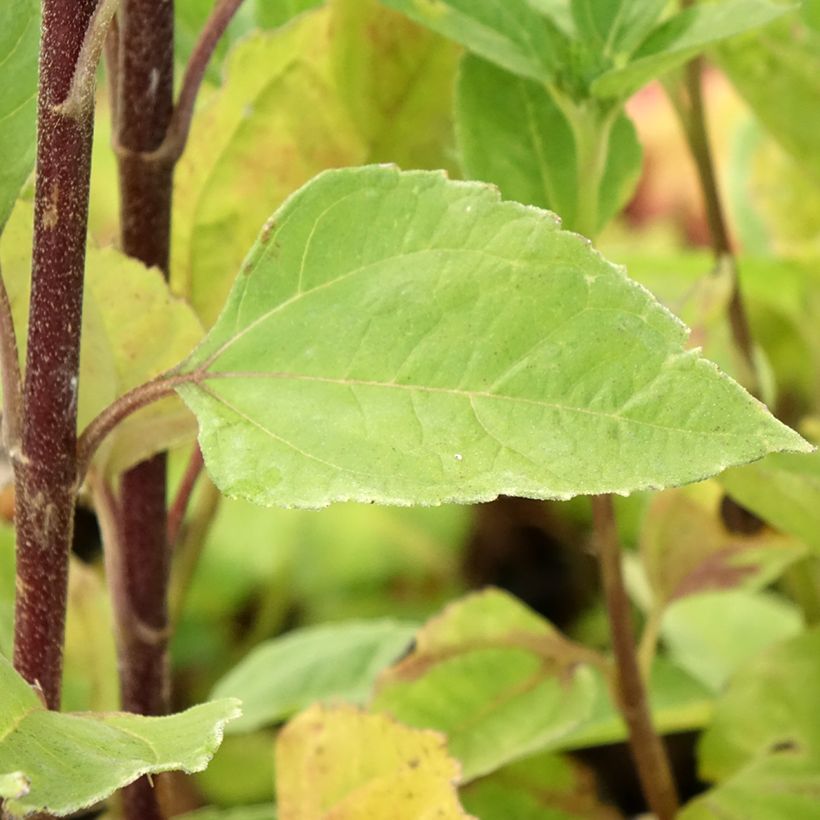

Flowering
Foliage
Plant habit
Botanical data
Helianthus
multiflorus x decapetalus
Sunshine Daydream
Asteraceae
Thinleaf Sunflower, Ten-petal Sunflower
Cultivar or hybrid
Other Helianthus
Planting and care
Plant Helianthus multiflorus 'Sunshine Daydream' in ordinary soil, even clayey or chalky, but deep and fertile. This perennial can tolerate some drought and heavy soils, as long as they are loose. Plant in a sunny position, sheltered from strong winds that could flatten the clump, yet still sturdy enough. The plant generally does not need staking, except in very windy conditions. Prune the clump after flowering to prevent seed formation, or in late winter to maintain a compact habit.
Planting period
Intended location
Care
-
, onOrder confirmed
Reply from on Promesse de fleurs
Summer flowering perennials
Haven't found what you were looking for?
Hardiness is the lowest winter temperature a plant can endure without suffering serious damage or even dying. However, hardiness is affected by location (a sheltered area, such as a patio), protection (winter cover) and soil type (hardiness is improved by well-drained soil).

Photo Sharing Terms & Conditions
In order to encourage gardeners to interact and share their experiences, Promesse de fleurs offers various media enabling content to be uploaded onto its Site - in particular via the ‘Photo sharing’ module.
The User agrees to refrain from:
- Posting any content that is illegal, prejudicial, insulting, racist, inciteful to hatred, revisionist, contrary to public decency, that infringes on privacy or on the privacy rights of third parties, in particular the publicity rights of persons and goods, intellectual property rights, or the right to privacy.
- Submitting content on behalf of a third party;
- Impersonate the identity of a third party and/or publish any personal information about a third party;
In general, the User undertakes to refrain from any unethical behaviour.
All Content (in particular text, comments, files, images, photos, videos, creative works, etc.), which may be subject to property or intellectual property rights, image or other private rights, shall remain the property of the User, subject to the limited rights granted by the terms of the licence granted by Promesse de fleurs as stated below. Users are at liberty to publish or not to publish such Content on the Site, notably via the ‘Photo Sharing’ facility, and accept that this Content shall be made public and freely accessible, notably on the Internet.
Users further acknowledge, undertake to have ,and guarantee that they hold all necessary rights and permissions to publish such material on the Site, in particular with regard to the legislation in force pertaining to any privacy, property, intellectual property, image, or contractual rights, or rights of any other nature. By publishing such Content on the Site, Users acknowledge accepting full liability as publishers of the Content within the meaning of the law, and grant Promesse de fleurs, free of charge, an inclusive, worldwide licence for the said Content for the entire duration of its publication, including all reproduction, representation, up/downloading, displaying, performing, transmission, and storage rights.
Users also grant permission for their name to be linked to the Content and accept that this link may not always be made available.
By engaging in posting material, Users consent to their Content becoming automatically accessible on the Internet, in particular on other sites and/or blogs and/or web pages of the Promesse de fleurs site, including in particular social pages and the Promesse de fleurs catalogue.
Users may secure the removal of entrusted content free of charge by issuing a simple request via our contact form.
The flowering period indicated on our website applies to countries and regions located in USDA zone 8 (France, the United Kingdom, Ireland, the Netherlands, etc.)
It will vary according to where you live:
- In zones 9 to 10 (Italy, Spain, Greece, etc.), flowering will occur about 2 to 4 weeks earlier.
- In zones 6 to 7 (Germany, Poland, Slovenia, and lower mountainous regions), flowering will be delayed by 2 to 3 weeks.
- In zone 5 (Central Europe, Scandinavia), blooming will be delayed by 3 to 5 weeks.
In temperate climates, pruning of spring-flowering shrubs (forsythia, spireas, etc.) should be done just after flowering.
Pruning of summer-flowering shrubs (Indian Lilac, Perovskia, etc.) can be done in winter or spring.
In cold regions as well as with frost-sensitive plants, avoid pruning too early when severe frosts may still occur.
The planting period indicated on our website applies to countries and regions located in USDA zone 8 (France, United Kingdom, Ireland, Netherlands).
It will vary according to where you live:
- In Mediterranean zones (Marseille, Madrid, Milan, etc.), autumn and winter are the best planting periods.
- In continental zones (Strasbourg, Munich, Vienna, etc.), delay planting by 2 to 3 weeks in spring and bring it forward by 2 to 4 weeks in autumn.
- In mountainous regions (the Alps, Pyrenees, Carpathians, etc.), it is best to plant in late spring (May-June) or late summer (August-September).
The harvesting period indicated on our website applies to countries and regions in USDA zone 8 (France, England, Ireland, the Netherlands).
In colder areas (Scandinavia, Poland, Austria...) fruit and vegetable harvests are likely to be delayed by 3-4 weeks.
In warmer areas (Italy, Spain, Greece, etc.), harvesting will probably take place earlier, depending on weather conditions.
The sowing periods indicated on our website apply to countries and regions within USDA Zone 8 (France, UK, Ireland, Netherlands).
In colder areas (Scandinavia, Poland, Austria...), delay any outdoor sowing by 3-4 weeks, or sow under glass.
In warmer climes (Italy, Spain, Greece, etc.), bring outdoor sowing forward by a few weeks.


































